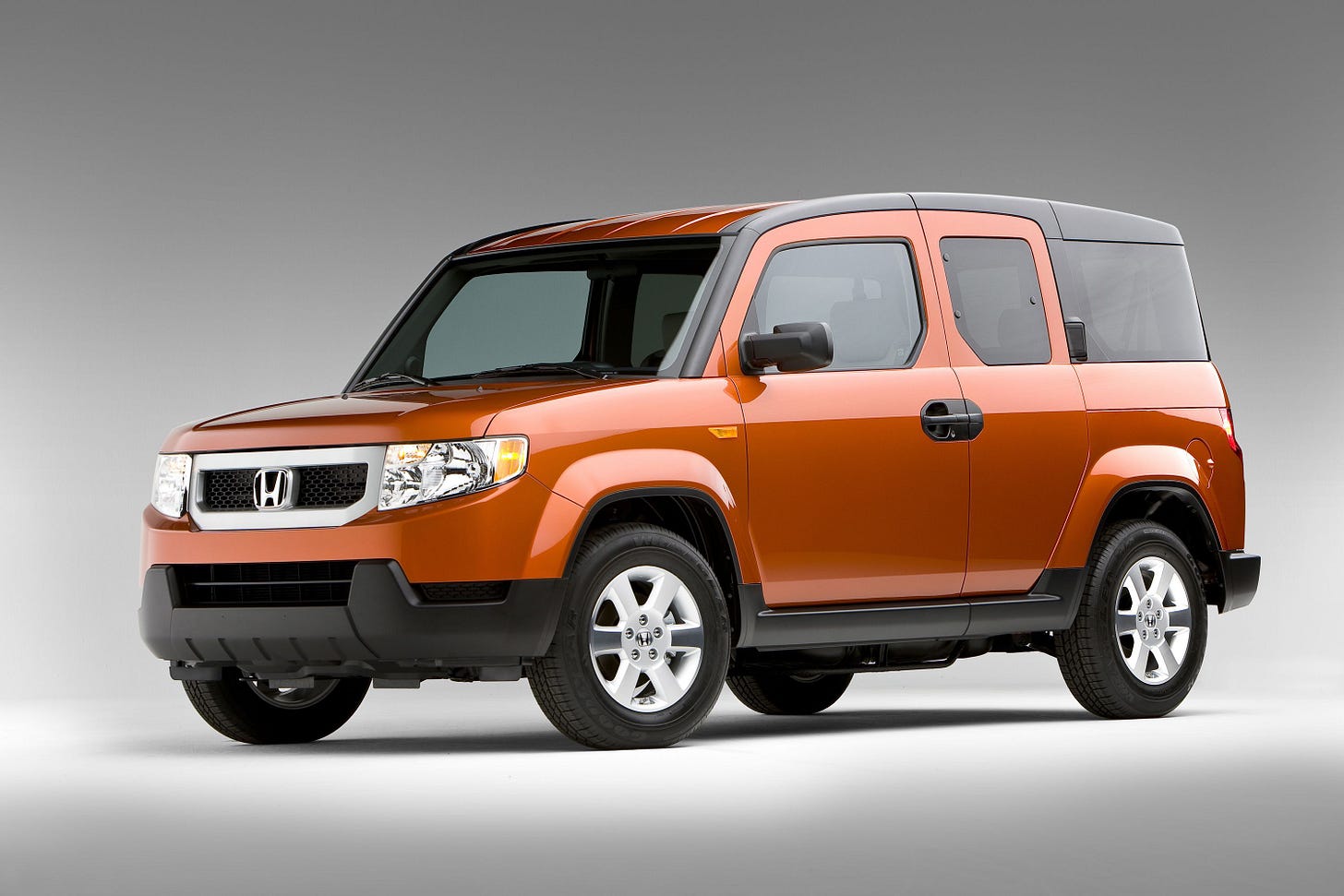I can’t keep living a lie. It's time to admit that I am not a man’s man. I am and always have been a gay straight man.
I've spent much of my life pretending to be a straight straight man, but it’s never felt right. Every conversation I’ve ever had with construction workers, hunters, cops, firemen, DIY dudes, athletes, guys in trucks or Carhartt overalls has left me knee-deep in an overwhelming sense of imposter syndrome. I’m just not one of them, and they can smell it. They see right through my pathetic pretention to be a guy’s guy — a man’s man.
But the truth is, I have very little in common with men’s men. To men’s men, an 8-cylinder 440 with overhead cams and four on the floor is preferable to a straight 6 with locked differentials. (I have no idea what any of those words mean.) I’d rather call an Uber. I’m more annoyed than thrilled by explosions, shots and monster trucks. I never even owned a car until I bought a Honda Element in my 40s. (If ever a car was designed with the gay straight dude demographic in mind, it is the Element, which looks like the love-child of a Mini Cooper and a Hummer.)
No, my idea of a good time with the boys tends toward “gay” activities like hang out with hyper-articulate, funny guys eager to talk about their sexual and emotional lives, get emotionally blown away by listening to a Mahler symphony at high volume, or cook an excellent meal for my friends. Why ruin a good hike by adding golf clubs or shotguns? I’d choose a visit to an art museum over Hooters any day of the week.
If I’m at the gay end of the straight male spectrum on most matters, I’m down at the straight end on others. A gay friend of mine once paid me the highest compliment when he said, “Chris, you’re gay in everything except your sexuality.” (And musicals. I can’t understand how anyone can sit through a musical.) To men’s men, women are alien, problematic and inscrutable, but I find women to be fascinating, familiar and quite scrutable — as do most of the gay guys I know.
If there’s a Ryan-to-Rogan spectrum in straight male identity, then something similar must exist in the other gender identities as well. Gay dudes range from flamboyant to flamenco, and the straight gay dudes aren’t necessarily closeted; that’s just how they are. They’re basically straight in everything except their sexuality. I get that. Same with women, gay and straight.
To men’s men, women are alien, problematic and inscrutable, but I find women to be fascinating, familiar and quite scrutable — as do most of the gay guys I know.
But maybe a spectrum is an insufficient, outdated way to think about these things. In 1962, a strange and fascinating man named Gavin Arthur (grandson of president Chester Arthur) published a book called The Circle of Sex, in which he argued for a clock-like scheme for understanding sexual orientation, rather than the usual linear scheme. In his circle, there is a continuity from one type to the adjacent type and a direct connection across the circle to its mirrored manifestation in the opposite sex. Thus, the most hyper-heterogenic “Don Juan” type sits next to the most homogenic “Dyke” type and directly across from the female hyper-heterogenic type, named after Lady Chatterly, the central character in D.H. Lawrence’s famous novel about a rich lady who gets down and dirty with the gardener. Arthur’s wheel shows how the extremely straight man and the extremely gay lesbian share their focused attraction to women, just as the high libido straight man and the high libido straight woman are connected by their similarly ravenous appetites — albeit for very different experiences.
I like this circular conception of identity and appetite. Transcendentalist thinker Ralph Waldo Emerson, began one of his most powerful and elegant essays by noting that “The eye is the first circle; the horizon which it forms is the second; and throughout nature this primary figure is repeated without end.” Point being, human sexuality — like most everything else — makes more sense when we consider ourselves in terms of spirals and orbs, gyres within gyres, turning, spinning, orbiting one another and ourselves.







I appreciate you coming forward with this piece — it resonated deeply with me as a straight man in his early 30s living in Portland and navigating similar questions around identity and sexuality. That said, I did sit through Hamilton last week and thought it was incredible! :)
As you touched on in one of your recent podcast interviews, we’re in an era where finding meaningful mentorship or guidance around masculine development feels increasingly rare for young men. A month ago, my friend group organized a guys’ night while the women had a separate Galentine’s gathering. Around 30 of us showed up, and we split into smaller groups of 5–6 men with prompts to explore questions like: What does masculinity mean to you? How do you feel about your sex life? What are your deeper ambitions and goals?
What followed were some of the most open, vulnerable conversations I’ve ever had with other men. What stood out to me most was that, despite our differences, nearly all of us were struggling to understand what positive masculinity actually looks like. It’s not that anyone was against masculinity but we all felt like we didn’t quite fit that traditional “man’s man” mold. Voicing our misalignment with traditional masculinity not only made me reflect on what might be missing from my life but also reminded me that I’m not alone in navigating this journey (and that it is comforting when men to open up to other men).
Thanks for all you do!
I’m a proud closet homosexual myself.